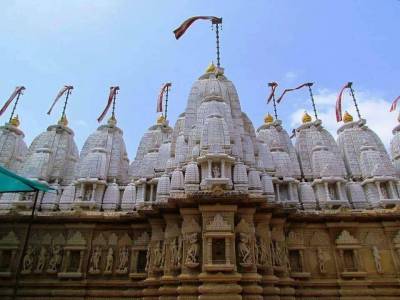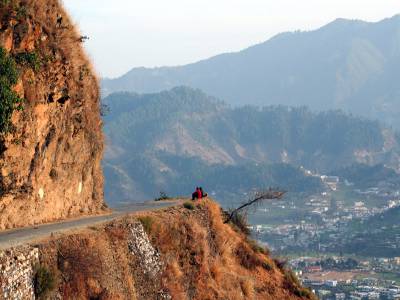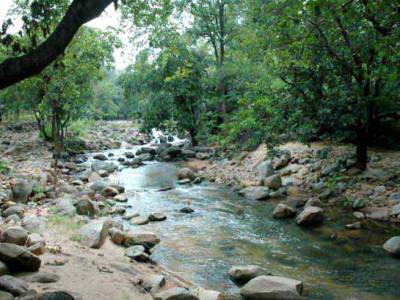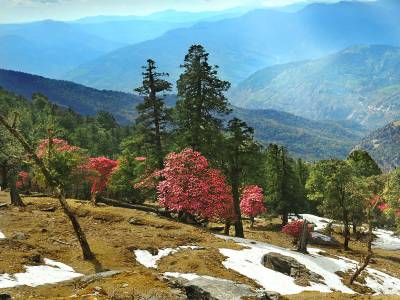
Almora
- /
- 9
It is composed of two words: Nava meaning nine and Ratri meaning night. During Navratri, devotees watch the seeds of inner renewal grow, sprout and worship them, and on the eighth, ninth, and tenth days, they worship Goddess Durga, Mahanavami, and Vijayashtami. Vijayadashami or Dussehra, which occurs on the tenth day of the month, celebrates the victory of Shakti over Mahishasura, of Lord Rama over Ravana, and Durga over demons such as Madhu-Kaitav, Chanda-Munda, and Shumbha-Nishumbha.
Three more days of Navratri are the eighth, ninth, and the tenth day of Navratri, known as Durgashtami, Mahanavami, and Vijayadasami. During the fire ceremony on the tenth day of Navaratri, the Navaratri participants are blessed by Shiva.
There are important climatic and solar influences at the beginning of spring and the beginning of autumn. It is for this reason that these two periods are considered sacred times for worshiping the Divine Mother Durga. According to the lunar calendar, the festival occurs during these two periods. Gujarati dances called "Garba," which are widely performed during Navratri, are an important part of this festival in Gujarat, Maharashtra, and Karnataka. Several northern states like Bihar, West Bengal, Madhya Pradesh, and Punjab also celebrate this festival with great zeal.
Navadurga Maa is regarded as the most sacred aspect of Goddess Durga, who is the Hindu Mother Goddess and a reflection of Devi and Shakti. According to the Hindu tradition, Goddess Durga manifested herself in three major forms, Mahasaraswati, Mahalakshmi, and Mahakali, who are the active forces (Shakti) of Brahma, Vishnu, and Rudra, respectively (all gods would cease to exist without these goddesses).
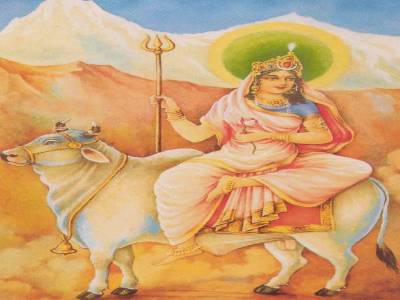
The first manifestation of Goddess Durga is Shailputri, is worshipped on first day. She rides a bull called Nandi holding a Trishul and a lotus. Shail means the mountain in Sanskrit, so Parvati is known as Shailputri.
read more...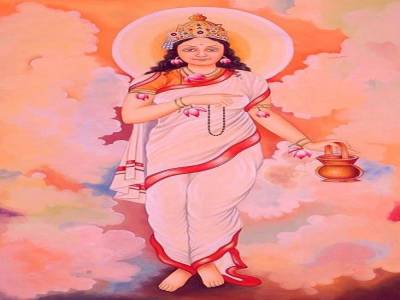
During the second day of Navratri, the goddess Brahmacharini is worshipped. A rudraksha mala is in her right hand, and a sacred Kamandalu is in her left. The meditative form of this goddess represents Goddess Parvati during her deep meditations.
read more...
On the third day of Navaratri, we worship Devi Chandraganta. Chandraghanta is a goddess who has a crescent moon on her forehead that resembles a bell of a temple.
read more...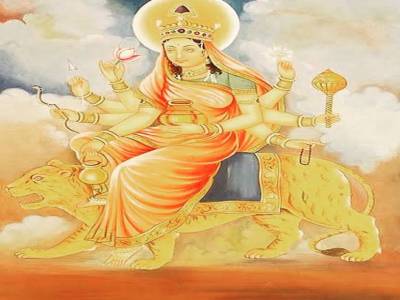
Navratris fourth day, Chatturthi, celebrates Devi Kushmanda. Her name means the Goddess who smiles. Three small words make up her name - "Ku" means little. In Hindi, a small cosmic egg is called 'Ushma' (small and smiling).
read more...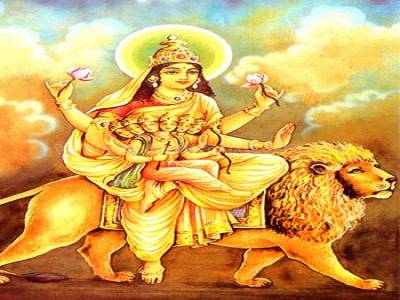
It is also called Panchami that the goddess Skandmata worshipped on the fifth day. Skandmata has four arms and carries a sacred kamandalu and a bell in each of them, with a lotus in two of them.
read more...
In Navratri, the sixth day is dedicated to the goddess Katyayani, a manifestation of Shakti. A form of Parvati who is also known as the warrior goddess Katyayani is widely regarded as one of the most violent versions of her.
read more...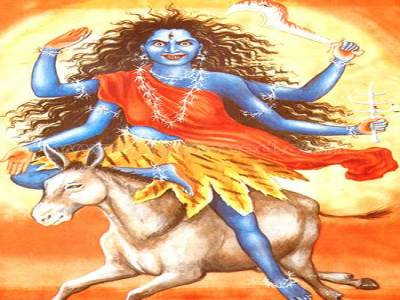
As a tradition, we celebrate the 7th avatar of Goddess Durga, Kaalratri (also spelled Kalaratri), on the 7th day of Navratri. Shubhankari is another name for her. Among Devi Durga's forms, Kaalratri has the fiercest aspect. To kill demons, she sacrificed her skin color for a darker complexion. Known as a four-armed deity, she carries a sword, trident, and noose while riding a donkey. It is said that her forehead contains a third eye in which the entire universe is contained.
read more...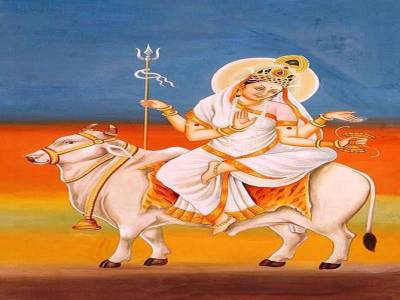
Goddess Mahagauri is worshipped on the eighth day of Navratri, known as Durga Asthami. A four-armed deity, she rides a white elephant or a bull. As she walks, she carries a Trishul and a damru.
read more...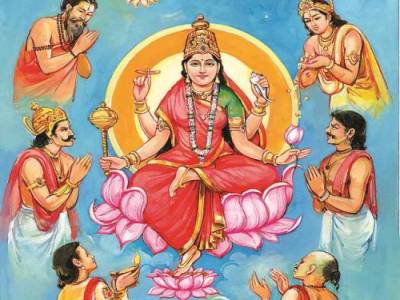
During Navratri, the ninth and final day belongs to Siddhidhatri, the goddess of wisdom and knowledge. An image of her is depicted sitting on a lotus holding a discus, book, mace, and a lotus in her hands. Goddess Durga is the goddess of perfection in this form.
read more...


